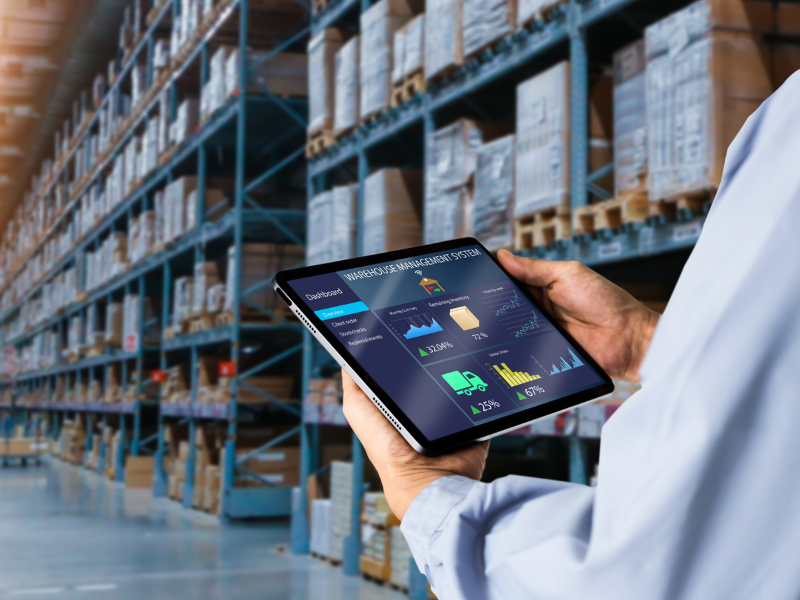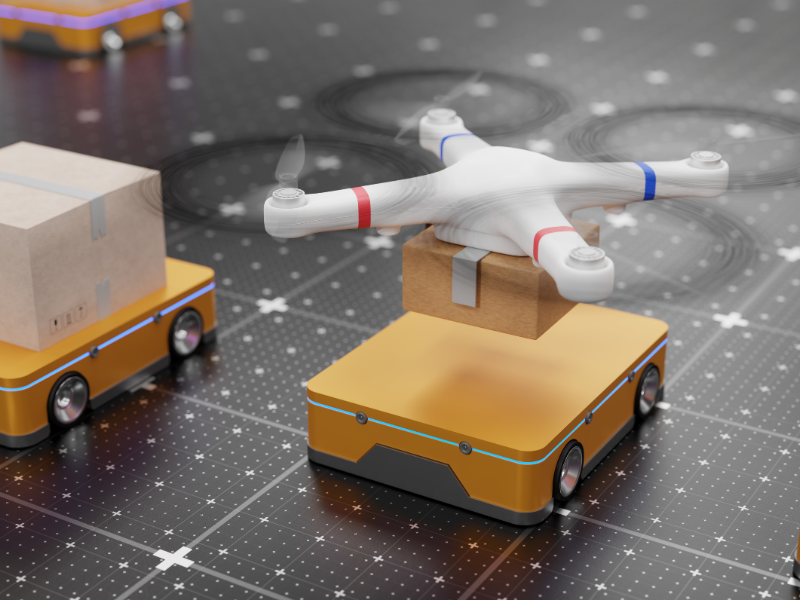Smart warehousing refers to the implementation of advanced technologies and innovative inventory and warehouse management systems (WMS) as a way to digitize and automate warehouse processes to enhance operational efficiency, accuracy, and responsiveness by mitigating the risk of human error.
One of the most prominent technologies smart warehouses utilize in the modern world is AI. AI can play a big role in inventory optimization.
The Role of AI in Inventory Management

AI inventory management is the practice of using artificial intelligence (AI) advancements to enhance and automate the inventory management process. There are many ways AI can help make the inventory management process easier and simpler.
Predictive Analytics for Demand Forecasting
AI-powered demand forecasting is a way that uses AI and machine learning to foresee future demand for goods or services. This technique is more precise than traditional methods that depend on historical sales data and simple statistical models.
AI incorporates artificial intelligence and machine learning tools for demand forecasting that evaluates sales records with market patterns and consumer conduct together with outside influences to anticipate future product or service requirements.
Reducing Stock Discrepancies with AI
By automating data analysis, monitoring stock levels in real time, and detecting outliers in the system, AI is indispensable in minimizing errors in inventory management, which often enhances the chances of human errors in tasks such as stock counting, order processing, and demand forecasting, resulting in more accurate inventory control and optimized stock levels.
Automated Stock Monitoring and Management
AI improves traditional inventory management by applying data analysis, machine learning (ML) as well as predictive analytics. By going through these procedures, AI can enhance and optimize many traditional inventory management tasks and this includes demand forecasting, supplier management and stock replenishment in the warehouses.
Benefits of AI-Driven Inventory Optimization

Accurate Demand Forecasting
AI algorithms can analyze historical sales data, market trends, and behavior of customers to predict future demand with greater precision, allowing for optimal inventory levels.
Optimized Inventory Levels
AI knows based on the demand patterns how much to restock products, and always avoid overstocking and not having it spoil in the warehouse.
Sustainable Practices
Applying the technological power of AI to computing your energy efficiency and utilization of resources can help dramatically reduce waste and streamline operations to improve energy consumption. In these and other methods, artificial intelligence can help you achieve your green warehousing goals.
Improved Customer Satisfaction

The use of AI for optimizing the stock management leads to higher levels of satisfaction of the customers as the products are available when needed.
Cost Efficiency
Optimized inventory levels and streamlined operations minimize wasted resources and might lead to significant cost savings for businesses.
Embracing AI for Smarter Warehousing
Indeed, integrating AI into inventory management gives smart warehouses a big edge in terms of optimizing stock levels, raising accuracy, and increasing the overall efficiency of the inventory management operations. The use of predictive analytics, AI empowered demand forecasting and automated stock management enables businesses to make data driven choices that would help reduce stock discrepancy, avoid stock more or stock less and will lead to improved customer satisfaction. AI’s ability to evaluate historical data, market trends, and consumer behavior provides a clear competitive edge in today’s fast-paced market.
Another benefit of AI is towards sustainability and cost management. Green warehousing plays an integral role in the context of achieving business green warehousing goals as it helps in analyzing energy use and waste economies, thus promoting environmental initiatives, while simultaneously contributing to boosting the bottom line with the use of cost efficiency. In the era of technology, smart warehouses, evidenced by their implementation of AI (Artificial Intelligence) generated solutions will be positioned to fulfill the needs of modern e-commerce while keeping their business running smoothly, sustainably, and courtesy of customers.

